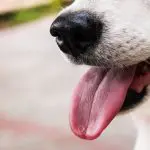Overweight or underweight dogs
Hunting Dogs working in the Field are usually in Top Physical Form
Despite their athletic nature, hunting dogs can be overweight dogs and can fall into a sedentary nature if not provided with enough exercise. Without an exercise program, these otherwise fit, energetic breeds can become lazy and inactive.
An estimated 40% of dogs are considered to be overweight or obese. The most common cause of overweight dogs is obvious, their caloric intake is greater than what is burned off in a day. Excess calories turn into fat, and over time this causes the dog to gain weight.
Hunting dogs fed a high calorie, protein dense food for athletic dogs are at particular risk for canine obesity, as their exercise level must be kept high in order to use up the calories that they are being fed. A dog being fed a high performance diet must adhere to strict exercise regimen, in order to prevent excessive weight gain. Fat dogs out hunting is not a pretty sight!
Veterinarians use a standardized Body Condition Score system to categorize overweight dogs. The scoring system runs from 1-9, with one being extremely thin, and 9 being morbidly obese.
As a general rule, the An ideal range for the body condition score for dogs is between a 4 and 5.
At a Body Condition Score (BCS) of 4 and 5, the dog should have ribs that can be easily felt under the skin, but not seen. The dogs should have a waist (a narrowing of their width behind the ribcage), as well as an abdomen that is tucked when seen from the side.
Dogs with a BCS of 6 and 7 are too heavy. Their ribs may be just barely felt under the skin.
Instead of a waist, they are flat from ribs to hindquarters. Overweight dogs in this category should have their exercise level increased, and caloric intake decreased. With a BCS of 8 or 9 they are considered morbidly obese or are commonly called fat dogs.
Their ribs cannot be felt over the skin, and have areas of fat deposits over their back, base of the tail, chest, neck or legs. Instead of a waist, they have an abdominal bulge and are wider in the abdomen than in the hips.
Their abdomens may appear distended and enlarged, and hang below the level of the ribcage. These dogs should be evaluated by a veterinarian for underlying health problems, as well as begin a weight reduction program under veterinary supervision.
Beware of Diabetes in dogs and other health ailments
Overweight dogs at this level are at risk for a variety of health problems: severe joint, muscle and ligament problems, as well as respiratory and cardiac complications. Diabetes in dogs is also a threat.
It is important to remember that just because your dog was bred for an athletic lifestyle, his energy level and fitness depend on you.
Keep your dog fit, healthy and not overweight. Dogs can then be assured good health and hopefully a long life.
Now for underweight dogs
Hunting dogs are athletes. But, sometimes you can have an underweight dog. Their excellent work ethic and eager-to-please spirit make them the ideal partner for a variety of athletic endeavors.
Like human athletes, the nutritional requirements for active dogs must be adjusted to meet their unique needs.
Due to their high activity levels and the strain placed on their body during hunts and trails, performance and hunting dogs require a superior level of nutrients and calories than the average house dog.
It is not uncommon for hunting dogs to be on the thin side, and often a healthy, athletic hunter, may seem like an underweight dog compared to the same dog kept as just a pet.
However, it is important to access your dog’s nutritional requirements, and balance them with the proper diet to ensure optimum health and best performance.
Veterinarians use a standardized Body Condition Score (BCS) system to evaluate the condition of a dogs overall health and ideal weight. The BCS scale is from 1-9, with 1 being malnourished and 9 being morbidly obese.
As a general rule, the “ideal” range for the body condition score for dogs is between a 4 and 5.
At this level, the dog should have ribs that can be easily felt under the skin, but not seen.
The dogs should have a waist (a narrowing of their width behind the ribcage), as well as an abdomen that is “tucked up” when seen from the side.
In highly active, performance dogs, a BCS of 3 may be considered a healthy weight. These dogs have a high percentage of lean body mass, with ribs that can be slightly seen under the skin, and obviously felt. The very tips of their spine or pelvis bones may be discernible, and they have a waist.
Dogs with a body condition score of a 1 to 2 are underweight, and their diets and or performance demands must be adjusted. In these dogs, their ribs, hip, pelvic and backbones can all be clearly seen, and a loss of muscle mass is evident.
Dogs with a body condition score of 3 or less should be evaluated for possible diet changes, to provide more balanced, high-calorie nutrition for the dog. In dogs that are well fed, but score persistently low on the BCS system, a veterinarian should be consulted to check for possible underlying medical problems, such as internal parasites that may be preventing the pet from absorbing the nutrients from his food.


